Things To Do in Durham, England’s Quintessential City and County
This website uses affiliate links which may earn a commission at no additional cost to you. As an Amazon Associate I earn from qualifying purchases.
Updated: 28th November 2019
My visit was supported by Durham Tourism
When you think of England gone by, what do you imagine? Impressive cathedrals, castles of grandeur, stories of Bishops and Royalty amongst perfectly manicured gardens? Or perhaps it’s afternoon tea, museums of artefacts, and a jolly chin-wag over a cuppa? Well, for those who are searching for the quintessentially British experience, I think I’ve found the perfect answer: Durham.
Located in the northeast of England, just below Newcastle, Durham City is celebrated for its UNESCO-listed Castle and Cathedral, but what many people don’t realise is Durham isn’t just an underrated European city, it’s a whole region consisting of four different areas; Durham Dales, Vale of Durham, The Durham Coast and the city itself.
I think Durham is one of those European hidden gems that really captures the essence of a country. It’s surprising more visitors to England, or indeed us local folk, aren’t aware of how great a destination it is.
So, while some people make the mistake of passing through on a day trip, for those who stay a little while, you are rewarded with the chance to explore some slightly off-the-beaten-path gems in England. I recently spent four days experiencing the best of Durham, and I’ve detailed it all below, as well as in the video guide above, so you can get an idea of what you can experience during a long weekend visit to Durham.
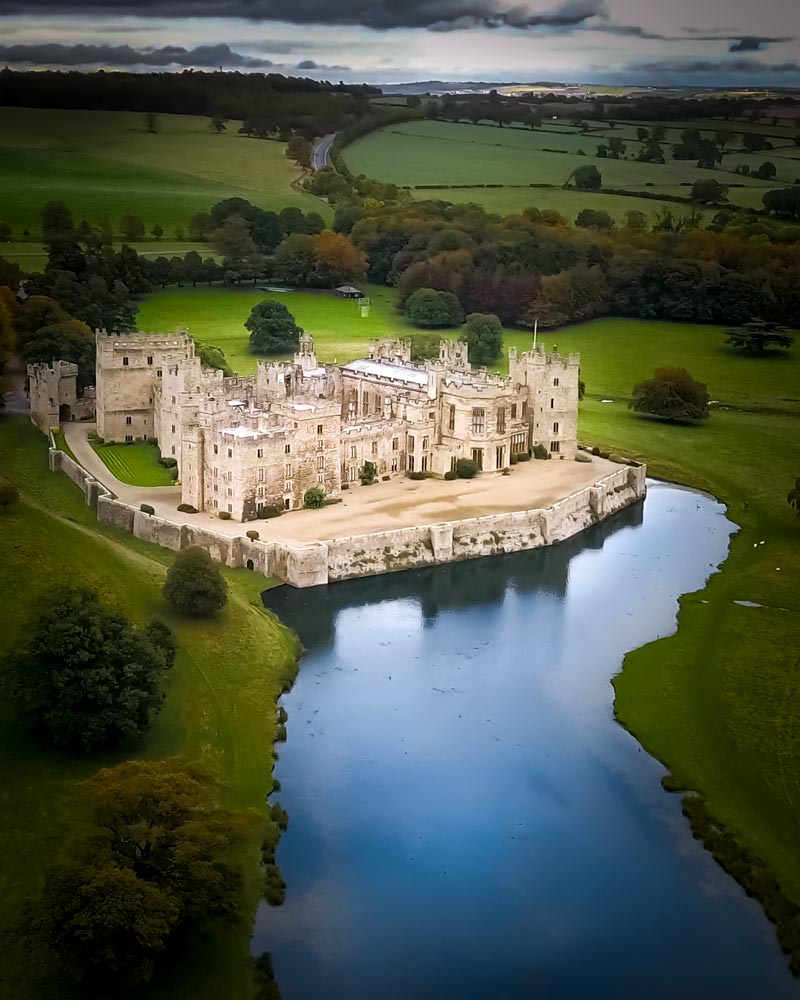
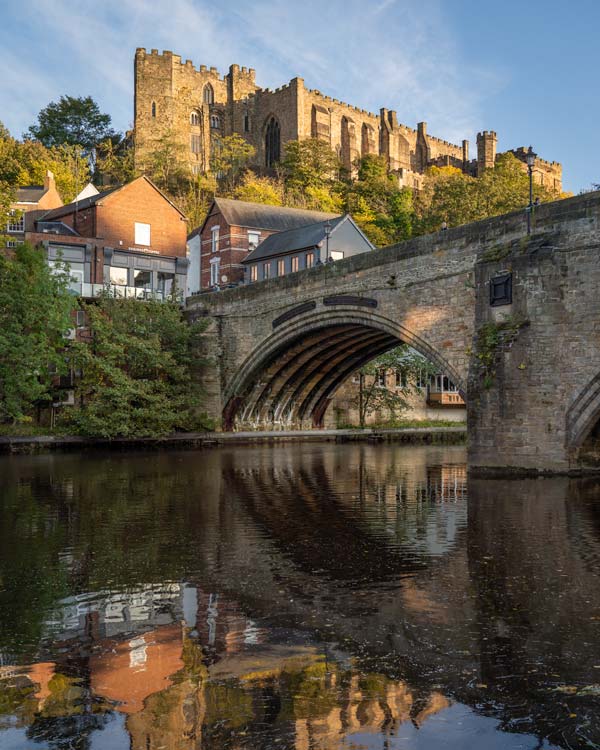
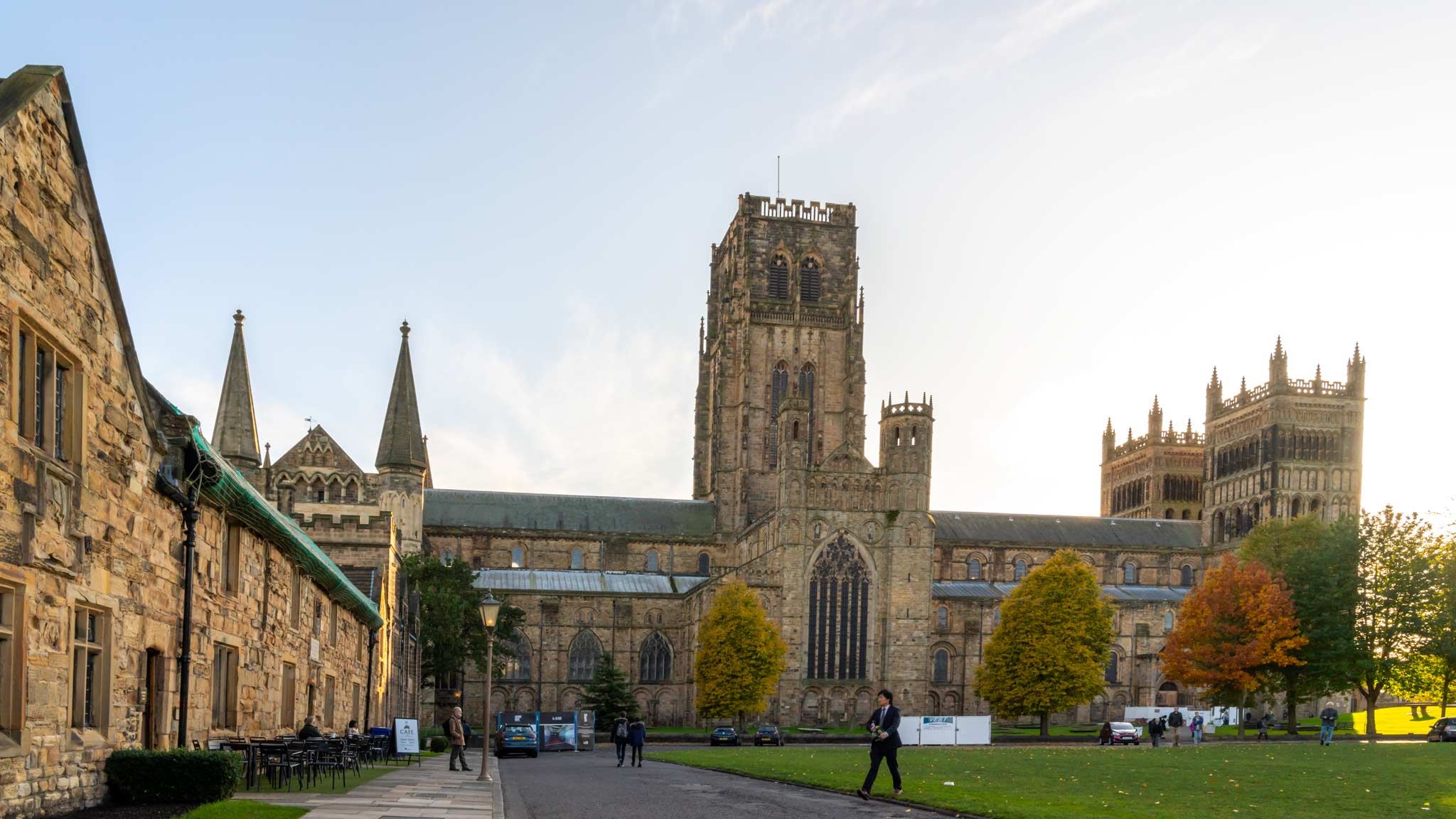
Start in the city of Durham
Durham city itself makes for an ideal weekend break in England as it’s relatively compact and easy to explore on foot. With lots of fantastic restaurants and a cool bar scene, partly due to the university population that lives here and its UNESCO attractions, if you don’t have time to spend a long weekend exploring Durham, then you can happily fill two days just in the city.
Durham sits along the River Wear, and the riverbanks are perfect places to grab a coffee, enjoy a stroll, or hire a boat and head out yourself on a sunny day.
Around Market Place, you’ll find some of the best architecture in the city and also a fair few independent shops and stores, especially in the Inside Markets courtyard. For more boutique shops with some arty designs, head to Fowlers Yard, a small selection of shops on a cobbled street with plenty of hidden gems to discover.
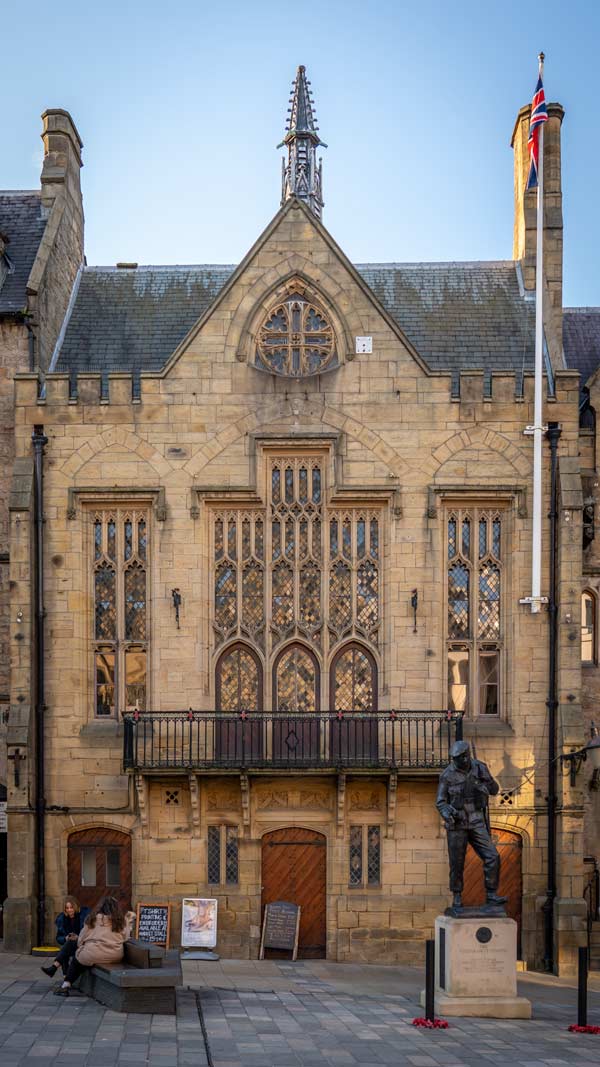
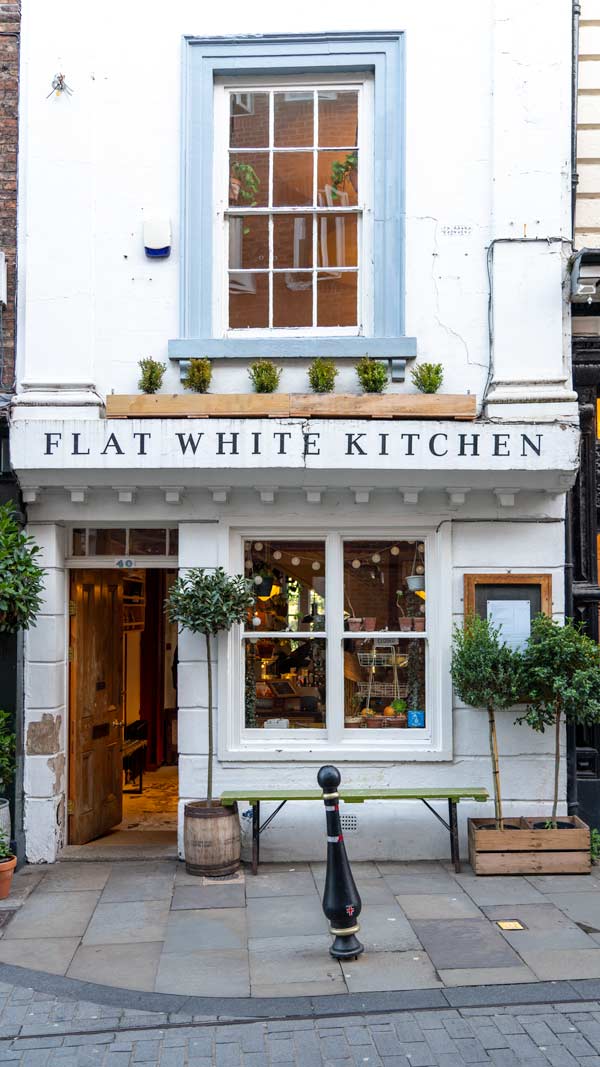
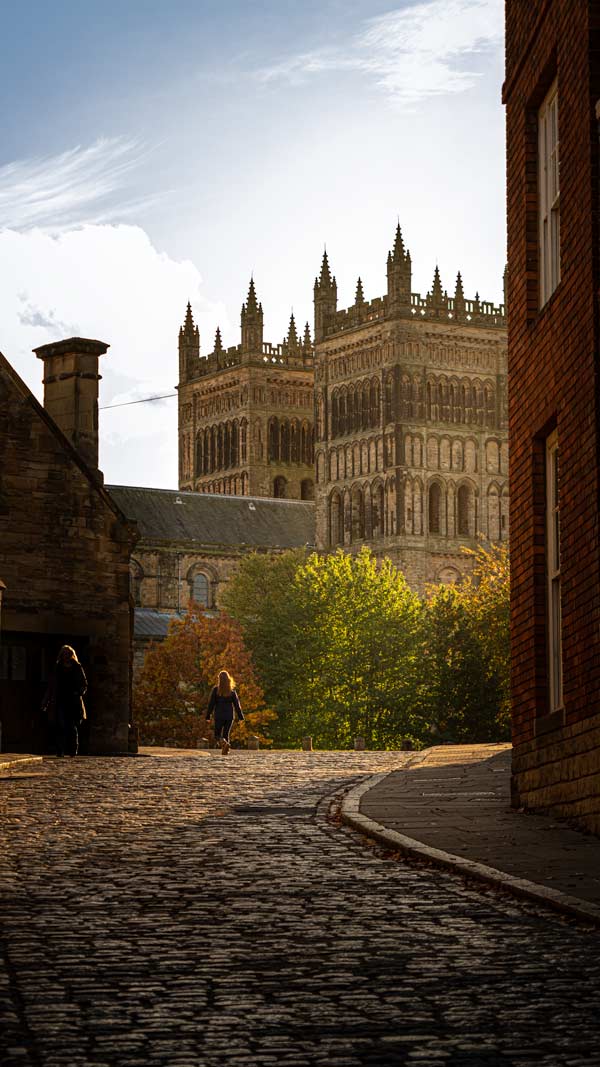
While you’ll find plenty of traditional pubs and fish and chip shops in the city, there is also some funky place to grab a coffee or meal. Flat White is a top coffee shop and cafe, and with the faded wood and bright light inside, it’s a bit of an Instagrammers dream. For delicious food, I had a couple of great meals and highly recommended Zen for fantastic Thai and Lebaneat for tasty vegetarian meals. Of course, there is Greggs, a fab bakery chain which I unashamedly love!
Durham also has a fair few green spaces to enjoy, both in the parks near the river, Wharton Park, and the Botanic Gardens, which are just outside the city centre near the University Campus. But of course, the main draw to the city is the UNESCO Cathedral and Castle, which are both found on Palace Green.
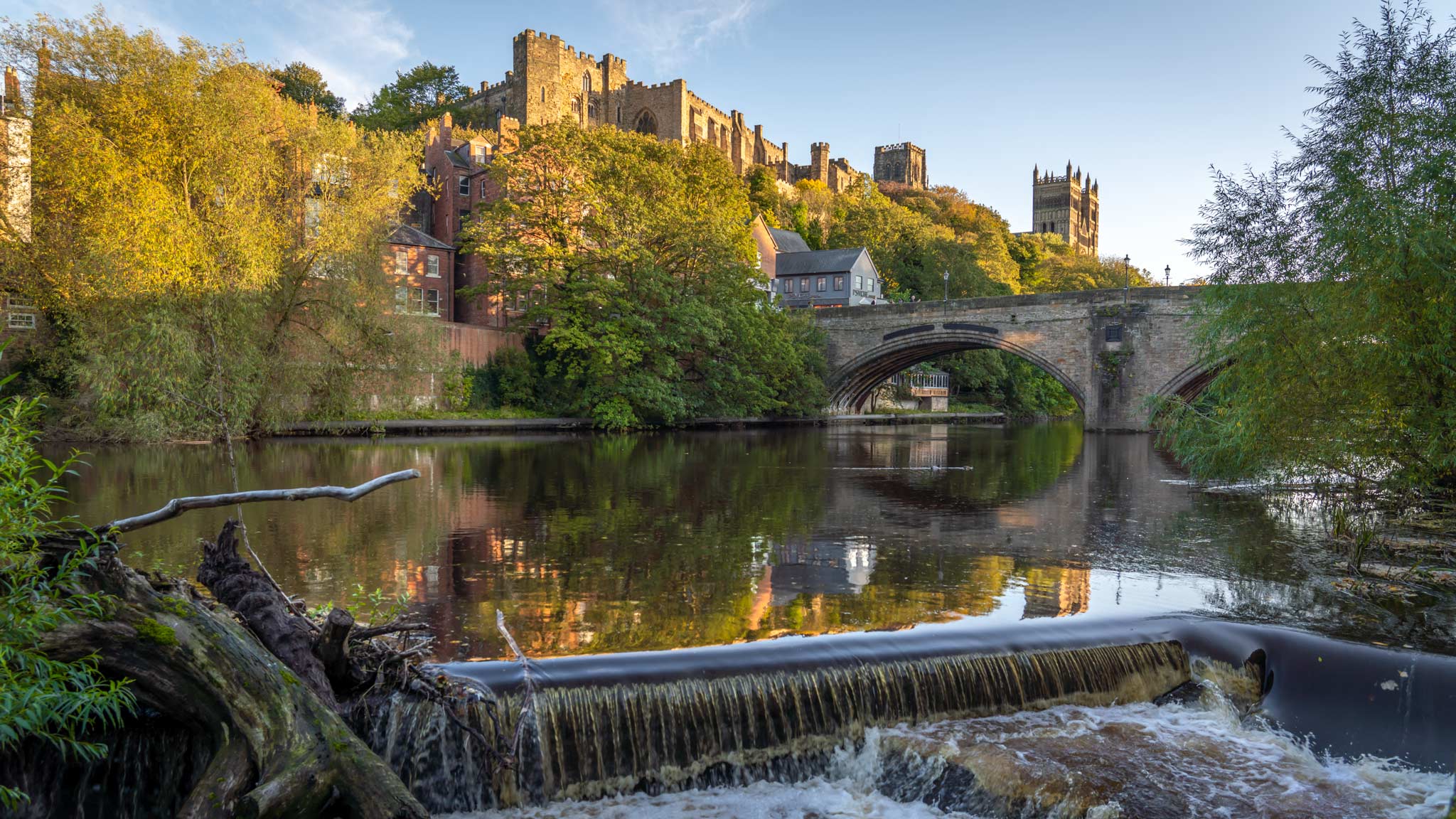
Climb the tallest Cathedral tower in England
Undisputedly one of the grandest Cathedrals I have ever set foot in, it’s clearly deserving of its UNESCO heritage status.
Construction began way back in 1093 and was dedicated to Saint Cuthbert, so it’s no surprise it’s his burial place. Unfathomably, it only took around 40 years to build the cathedral, and it still stands proud today.
Durham Cathedral consists of the tower, main hall, side rooms transformed into a museum, and lots of pretty Cloisters, which have been used in films such as Harry Potter before.
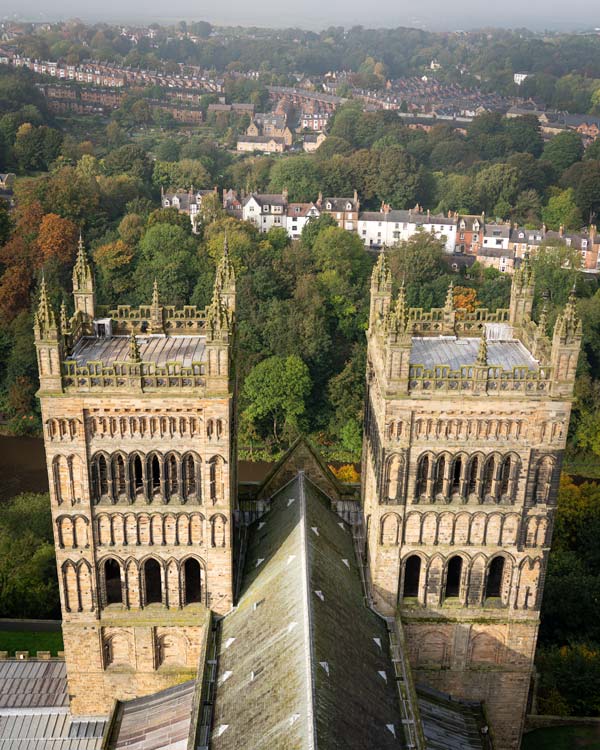
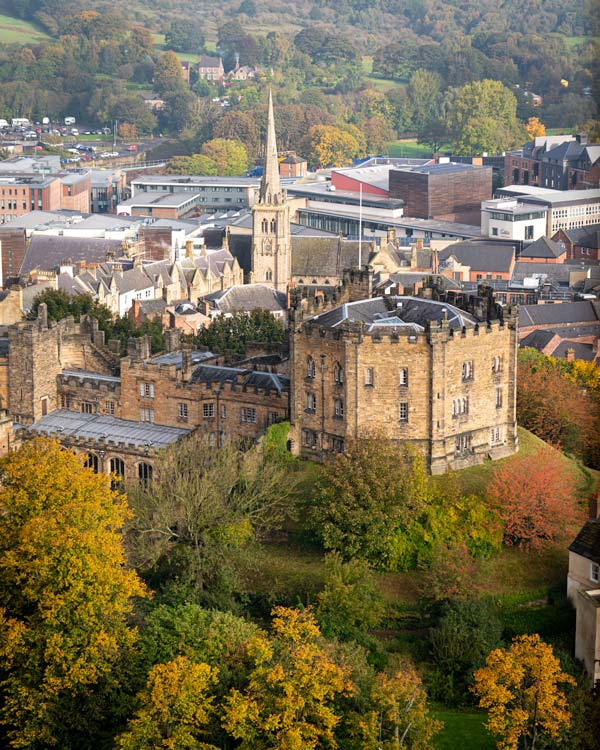
Inside, it is absolutely spectacular, with the stained glass windows illuminating the grand hall and chapel in various hues, including a modern stained glass window, which is a work of art in itself.
The Cathedral also enlightens you about the history and importance of Durham, from the story of the Benedictine Monks who built the Cathedral and the catalyst for the development of Durham in medieval times. It’s a symbol of power and division, of showing status to the Saxons and the Scots, and more so, an introduction to the Bishops of Durham, whose stories intertwine with many of the attractions throughout the region due to the power bestowed on them by the king.
With the tallest and narrowest tower of any Cathedral in England, you need to like steps and not dislike tight spaces to make it to the top, but for those that do, you’ll be rewarded with fantastic views.

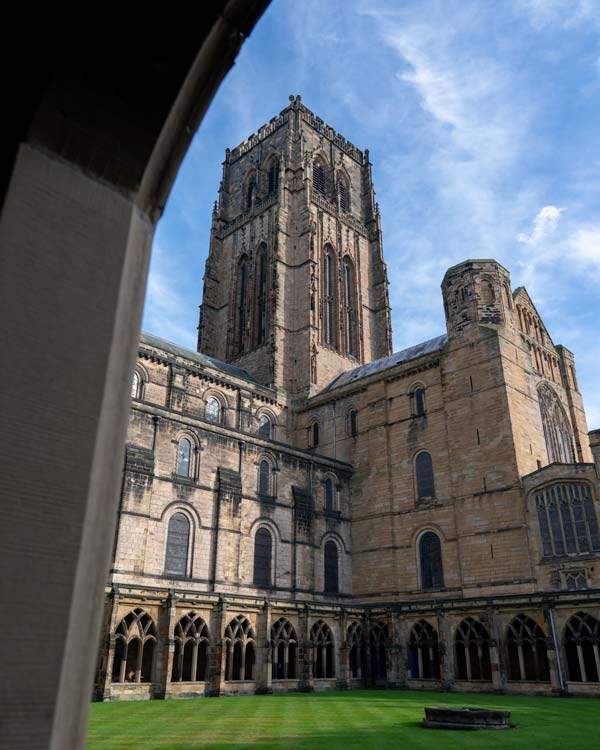
As Durham city is reasonably compact, you can admire right out across the Durham Dales, with greenery as far as the eye can see or autumn oranges if you visit in October as I did. It’s undoubtedly the best views of the city and region you’ll get, and I’m glad I ignored my fear of heights to make it up here.
Alongside the Cathedral, just off one of the cloisters, is the Open Treasure Museum, with a collection from around the world but with a particular focus on local discoveries and gems such as the original Sanctuary Knocker and the sword of St. Cuthbert.
You can venture into the stone cellars and go through air-tight rooms with ancient maps. The collection rotates from time to time, and I spent a solid hour walking through the open treasure rooms, so allow for this time to climb the tower and, of course, marvel at the Cathedral itself. I was here for four hours in total.
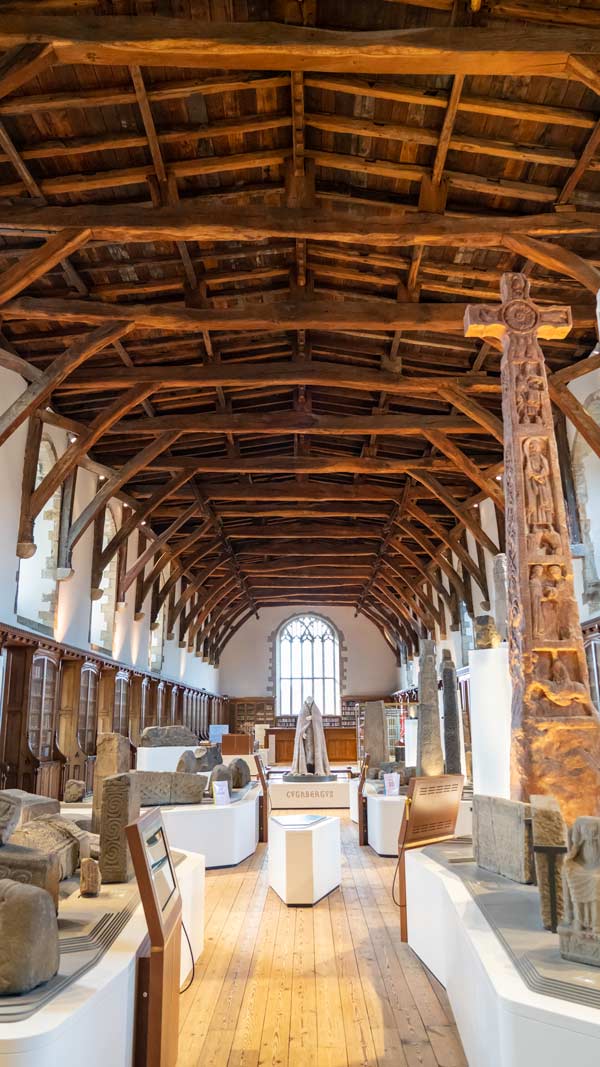


Discover Durham Castle, now home to the University
The second part of the Durham UNESCO World Heritage site is Durham Castle, which, due to now being the University, is open by tours bookable online.
The tours take around 45 minutes to an hour, and times vary, but it’s well worth booking on to one if you can. You’ll feel like you have stepped into the Harry Potter set, and in fact, they did request to film the grand dining room scenes here, but for some reason, it wasn’t possible.
in 1072 Durham Castle was commissioned by none other than King William the Conqueror, and its history is long and varied, most notably as the home of the Prince Bishops of Durham, and also having been a palace over the years.
You’ll be filled in on the key history during the tour, where you can expect to see lavish suite rooms used by Bishops, the aforementioned grand dining hall, which students use a canteen and is the breakfast room during B&B months, an ornate chape, underground carvings, and a museum of artefacts lining the hallways among other unique highlights.
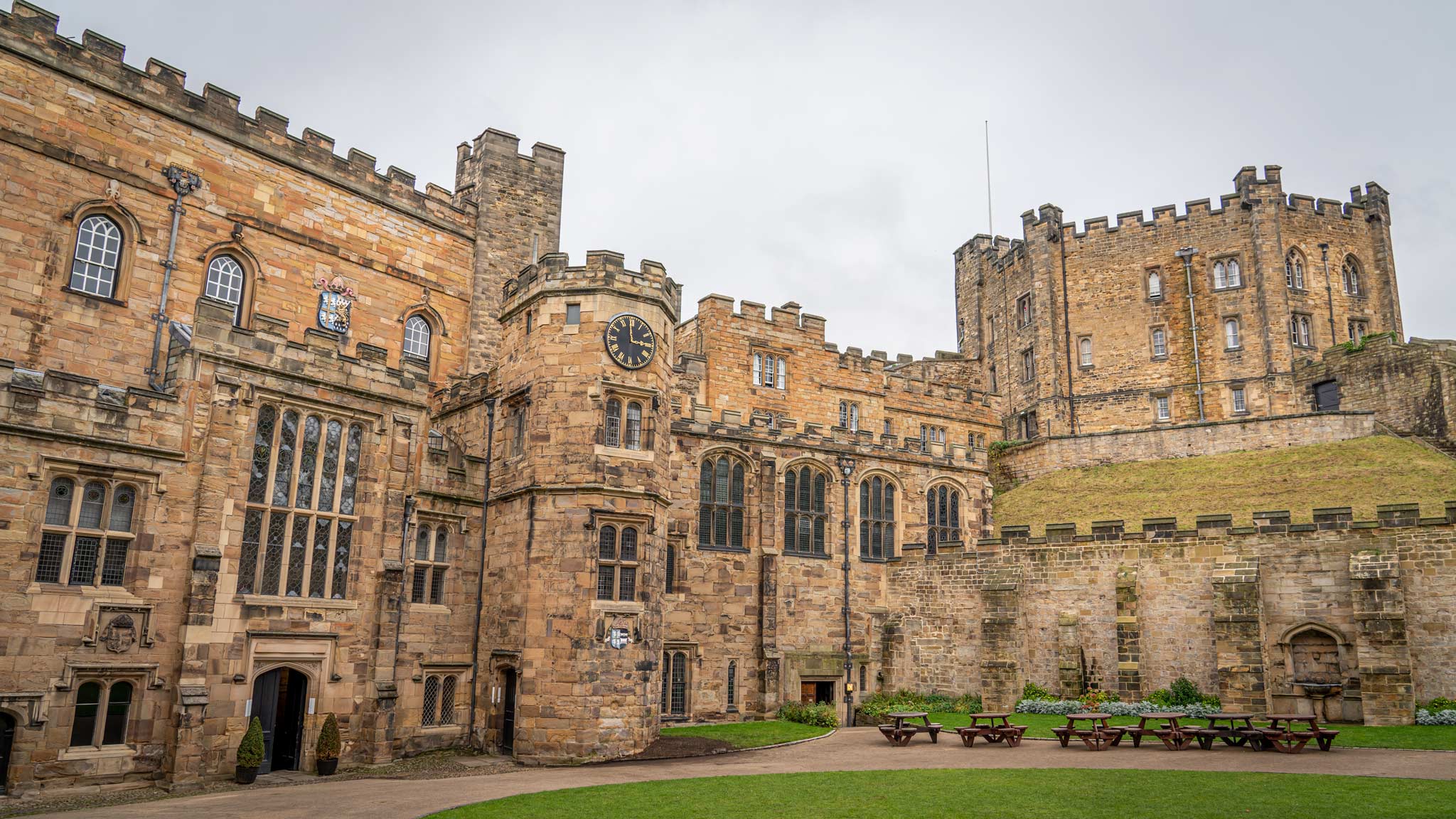
One of the coolest things about Durham Castle is when the students leave for holidays, you can actually book in and stay here – and no, not just in the dorms! Some of the old Bishop’s suites, with grand four-poster beds, detailed bathrooms and lavish living areas, are available for sleeping in, and the prices, given the slice of UNESCO history you are bedding down in, are pretty fair. Find more details in the ‘where to stay’ section at the bottom of this page.
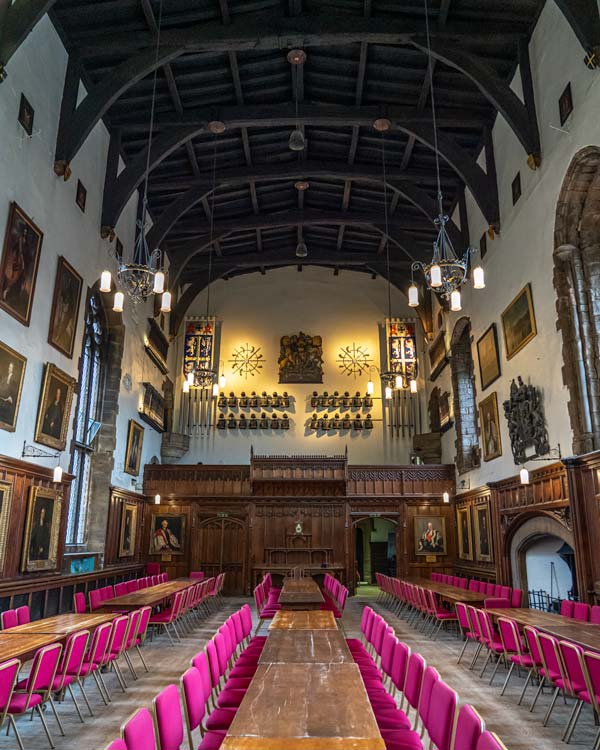
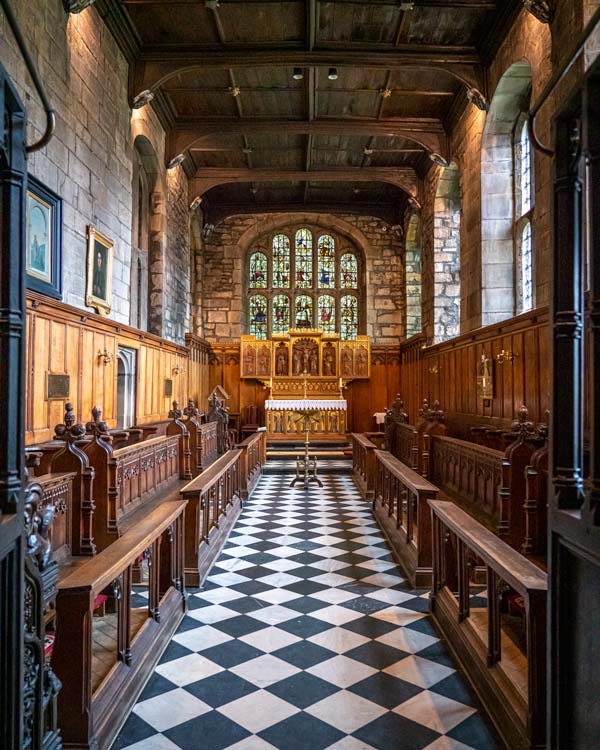
Step Back in time at Beamish, the Living Museum of the North – the best I’ve ever visited.
Hands down, Beamish is the best museum I’ve ever visited – and even with a full day here, I would gladly return for more. Luckily, given the scale of the place at 300 acres, if you buy a day ticket, you get to return as much as you want within a year.
Beamish, officially the Living Museum of the North, is home to countless interactive experiences that are well worth travelling for, and you can really get an idea of the history of England here as it plays out in front of you.
If you’re not familiar with the concept of a living museum, it basically works like an ordinary museum but with interactive elements and actors playing the characters that would be typical of the museum experiences; think museum meets interactive theme park. Before you ask, yes, as an adult, I was utterly entertained – I don’t think you can write this one off as just for the kids.
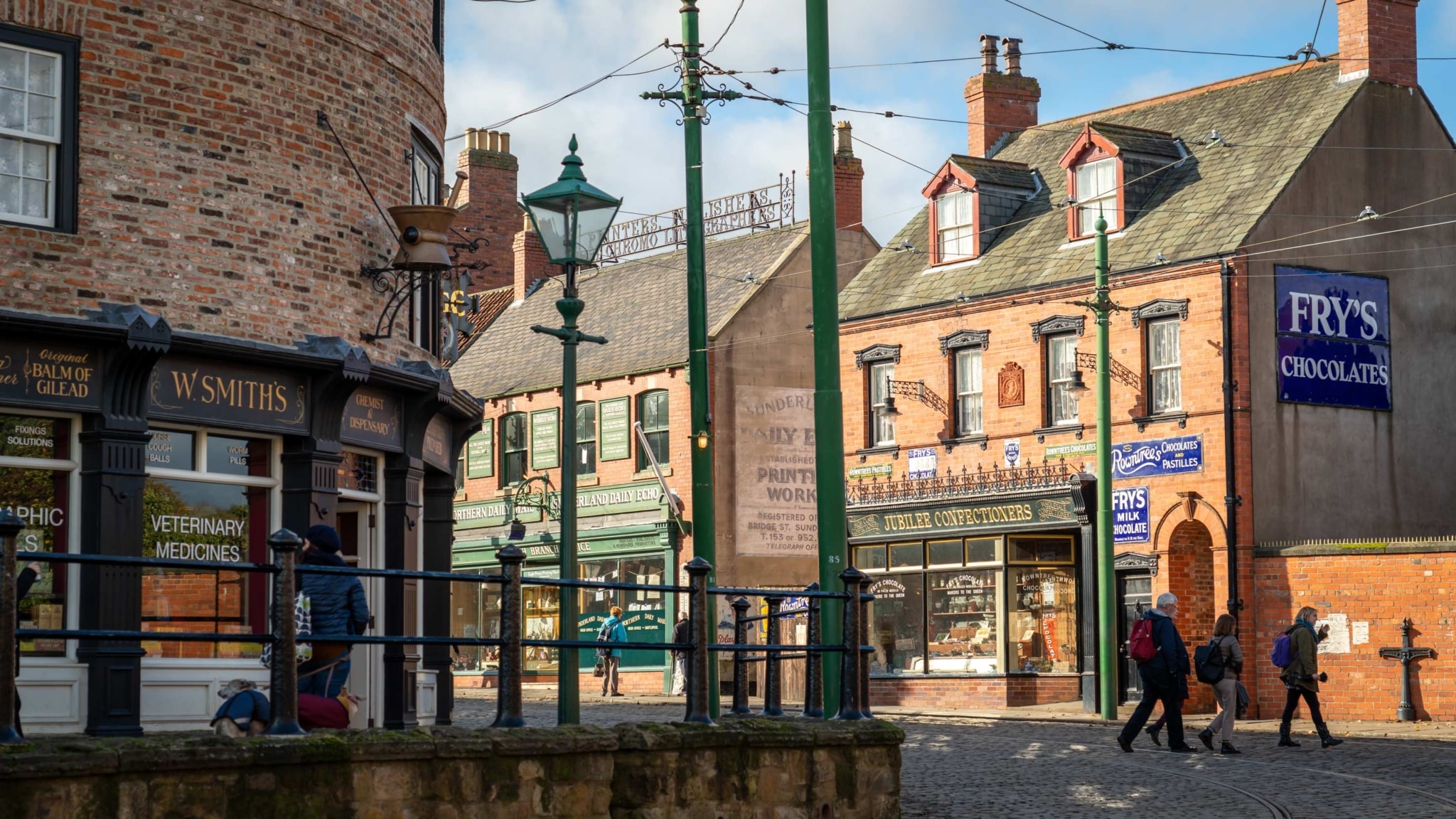
Some of the absolute highlights for me were seeing all the old-school trams, buses and steam rails going past (there are two train stations here!), which are all original or replicas of the original designs.
In the 1900s town, I enjoyed a dress-up and photography session, gorged on old-school treats from the sweet shop, admired the streets where a lot of the new Downton Abbey was filmed and even sank a pint in an old pub.
Across in the 1900’s village, I headed down a traditional mine, ate fish and chips cooked as it would have been in the day, popped into a school where teachers talked to tiny desks in front of blackboards and visited houses where the ‘owners’ were doing knitting and other tasks, always up for a chat! On top of this, there is a farm, a steam rail you can ride, an 1820s village and a brand new 1950s village about to open.
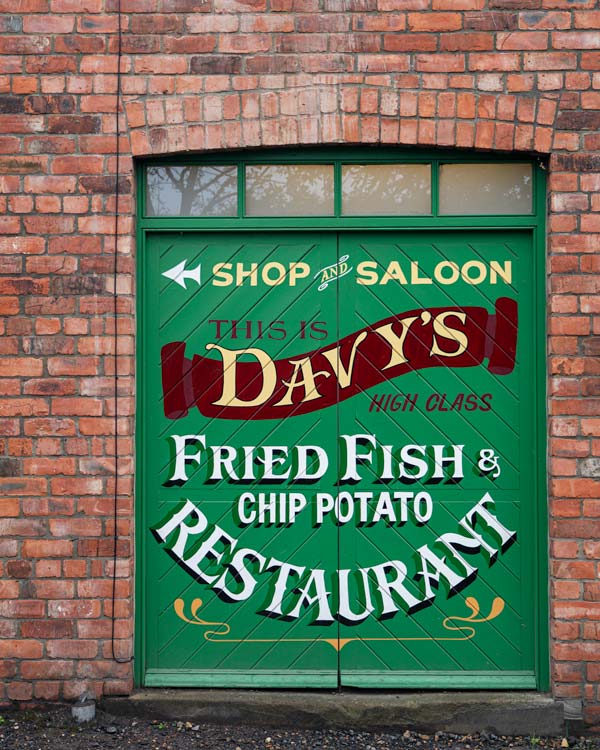
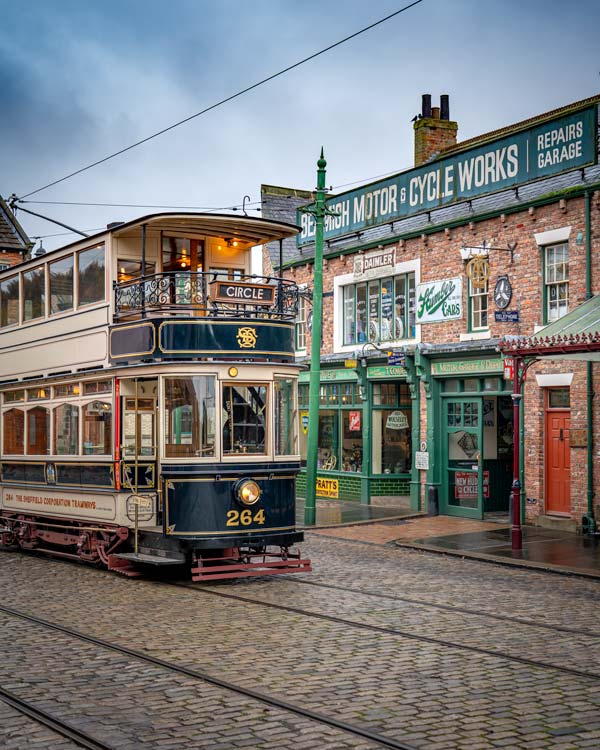
Head to the Dales for the impressive Raby Castle
It’s a tough call, but I think Raby Castle was the castle winner for me, even more so than Durham Castle!
Set amongst the rolling green hills of the Durham Dales, Raby Castle is fairly unique in that it is privately owned and not part of the English Heritage that operates many of the castles across the country. If you know me, you know I love visiting Scotland for all the castles, greenery and lochs, so Raby Castle was the perfect picture for me.
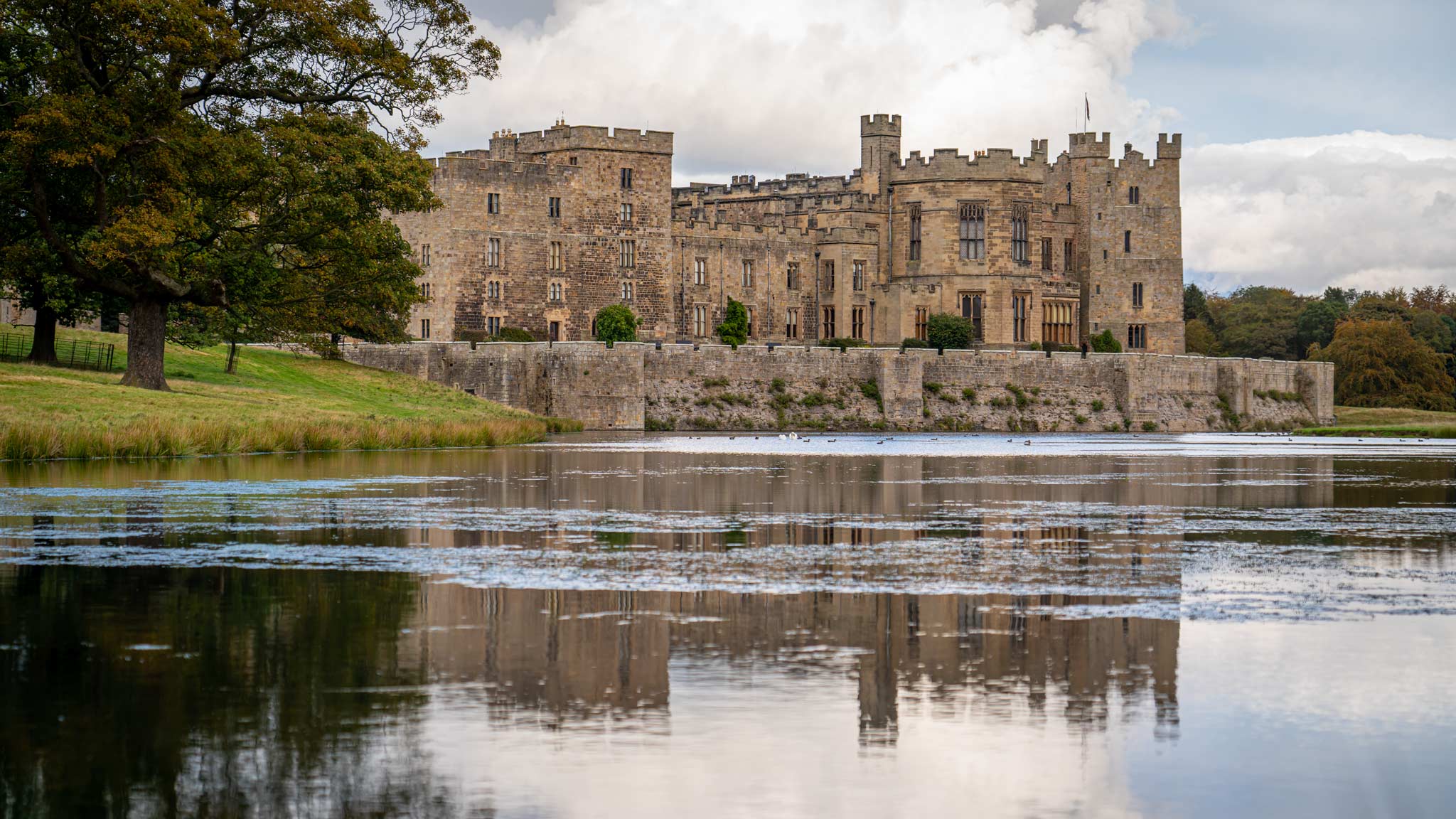
With deer trotting around the gardens and a considerable lake reflecting the castle like a mirror, the stately grandeur of the estate hardly went unnoticed. Tours of the castle operate for much of the year, excluding winter, and inside, it’s just as impressive as outside.
Dating back to the 14th century, Raby is one of the most impressive and best-kept medieval castles in the north of England. Purchased by the Vine Family in 1626, it has stayed in their keep since and is actually currently the seat of a Lord. That said, it is possible to get inside, as I mentioned on a tour, which will take you through the grand entrance hall, where horses and carts would have pulled up inside to deliver guests to the imposing staircase, and from here, you enter into the dining hall.
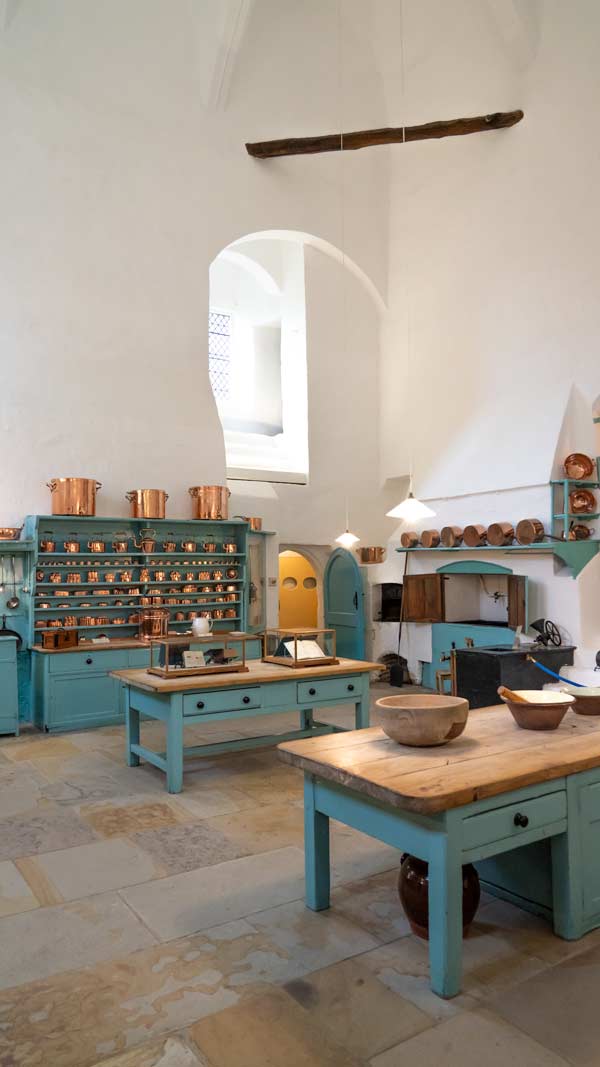
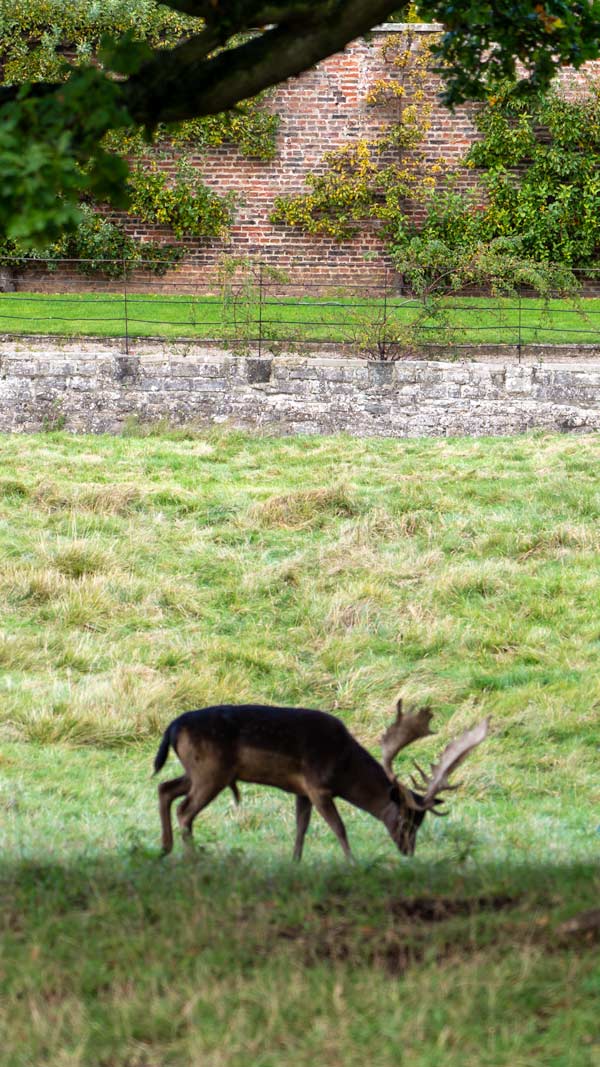
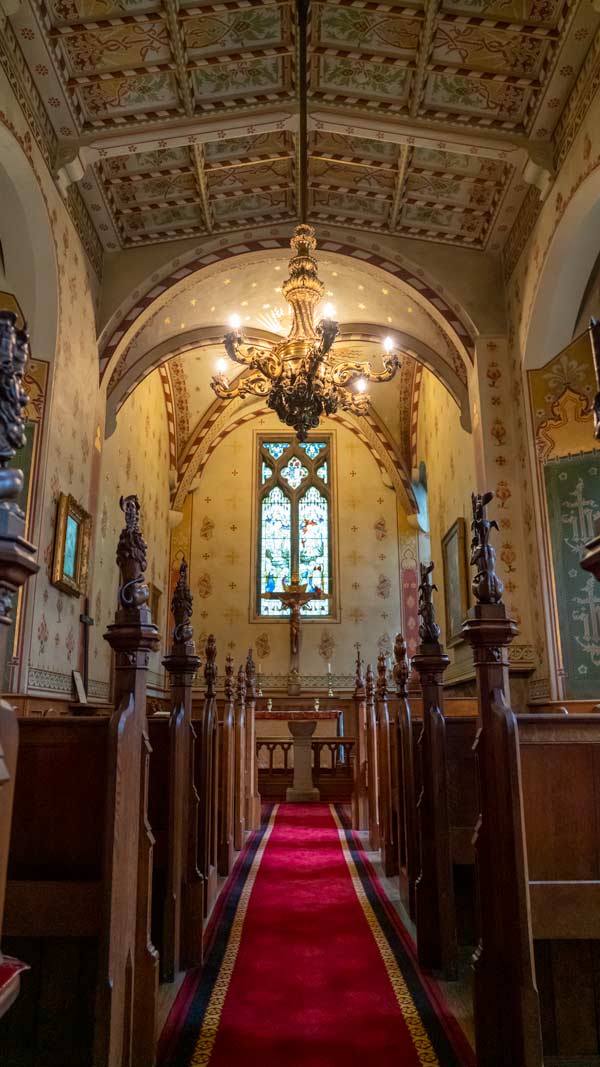
Multiple rooms are open to the public, each dressed up in all their glory, though one of my favourite parts of the house was the kitchen, which is a vast space in blues and whites adorned with bronze cooking equipment and, at times, would have seen up to 40 people working in here! It’s no surprise, given the impact of the castle, that it has been used as a filming location for various productions, including Victoria.
The area around the castle is open for dog walkers and ramblers, and there is also a lovely little cafe here situated in the old horse stables. If you are after a traditional English Afternoon Tea in a rather spectacular setting, you can’t go wrong here, although the menu is full of delicious dishes and daily specials, alongside the coffees and cakes on offer. If you have a car, you can quite easily do Raby, Bowes and Barnard in one day, given their proximity to each other in the Durham Dales.
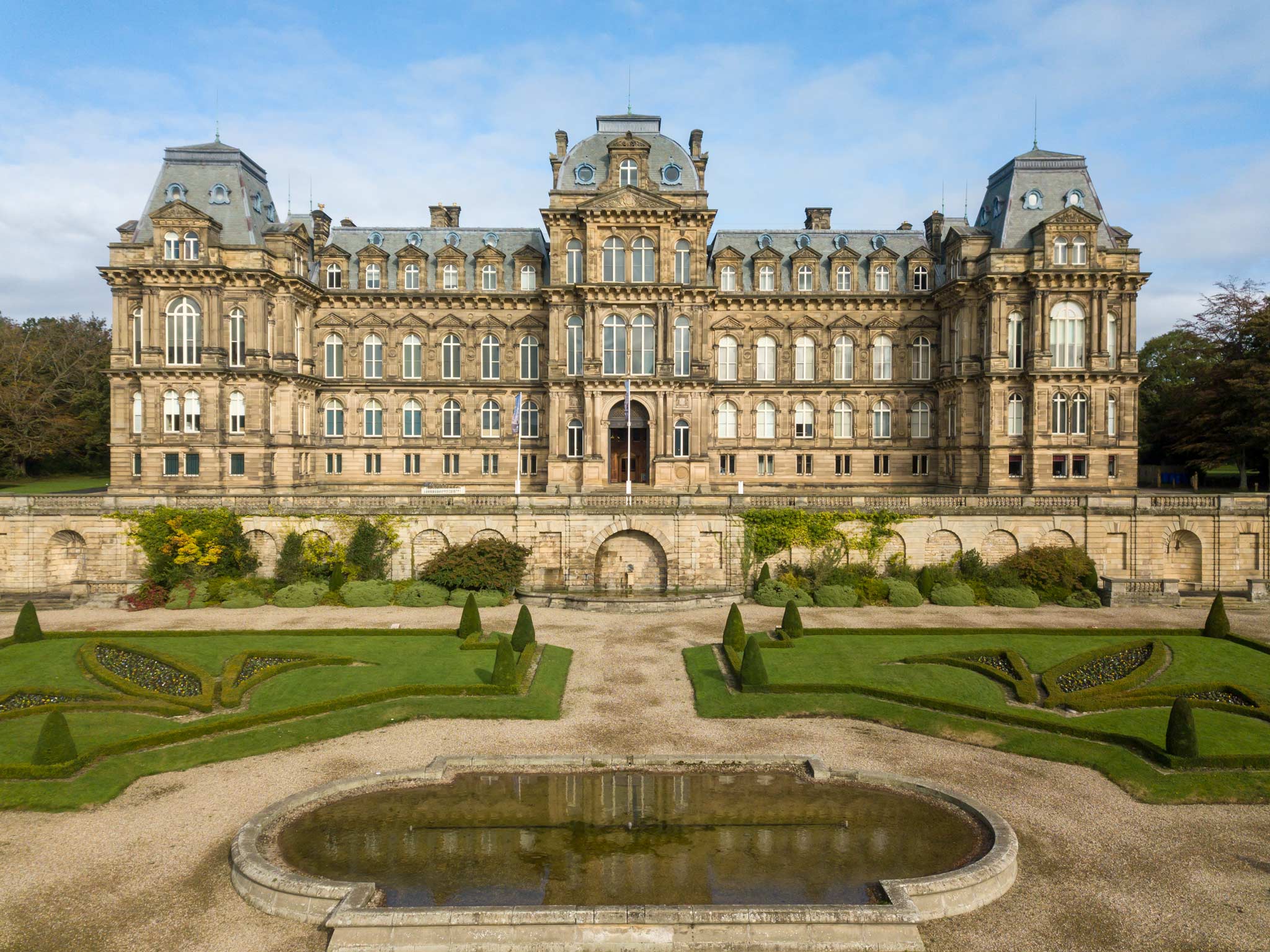
Marvel at one man’s love at The Bowes Museum
At first glance, you think it’s a castle, then maybe a palace, but no, neither is correct! The Bowes Museum may be modelled like a Chateau in France, but it was always intended to be a museum and a gift, just in a very grand building!
Built as a gift to both his wife and the local people of where he called home, it has stood proud here since the 19th century thanks to John Bowes and his wife, Joséphine. Joséphine was an actress in France, and she and John fell in love, splitting their time between the two countries. Sadly, neither of them lived to see the museum completed, but inside, you’ll find a grand collection of their art and personal treasures, alongside some exhibited attractions.
The most famous of the collection is the Silver Swan, one of just a few 18th-century automatons still in existence in the world and here, it is still wound up and played daily at 2 pm!
Beyond that, each room in the museum has a collection ranging from theatre memorabilia to classic art, musical instruments, fashion and furniture. It’s also set up to be relatively interactive. At the time of my visit, there were Lego versions of the collection to play with and even a modern pottery collection of which guests were invited to take a piece home – a first for me in a museum! Even if you decide not to come inside the museum, the gardens and architecture are well worth a visit.
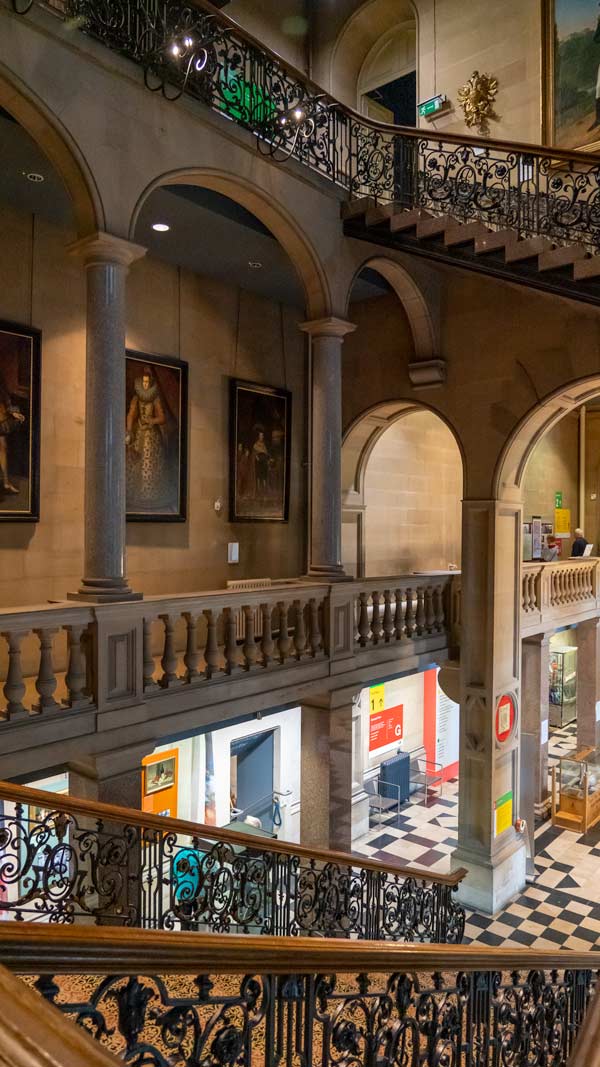
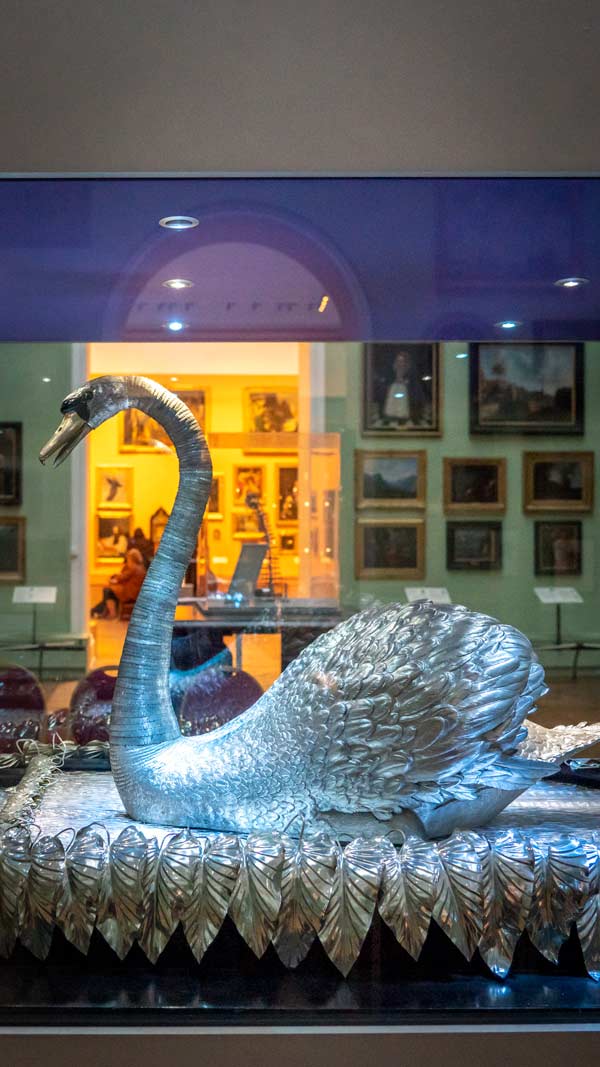
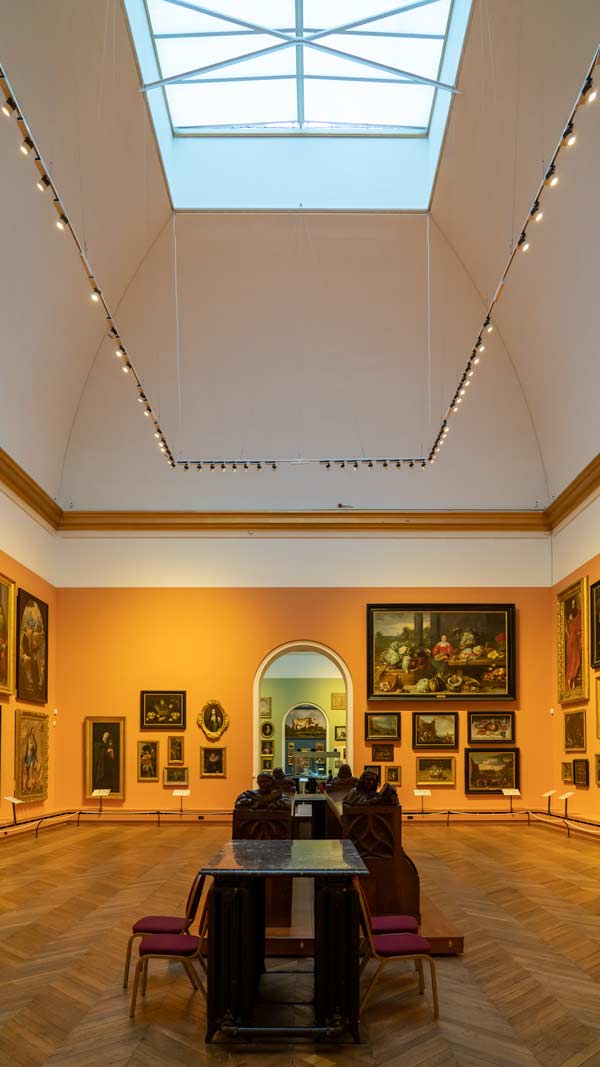
Stroll through the old market town of Barnard Castle
Between The Bowes Museum and Raby Castle, I briefly stopped in the adorable market town of Barnard Castle, which was like stepping back in time! Quaint independent pubs, cafes and shops lined the streets, with old houses and brickwork framing them.
The ruins of Barnard Castle itself sit just behind the town, although if you are short on time, then Raby Castle in its grandeur should be the priority as not that much remains of Barnard Castle. Another set of ruins, Egglestone Abbey, sits just a little further down the River Tees.
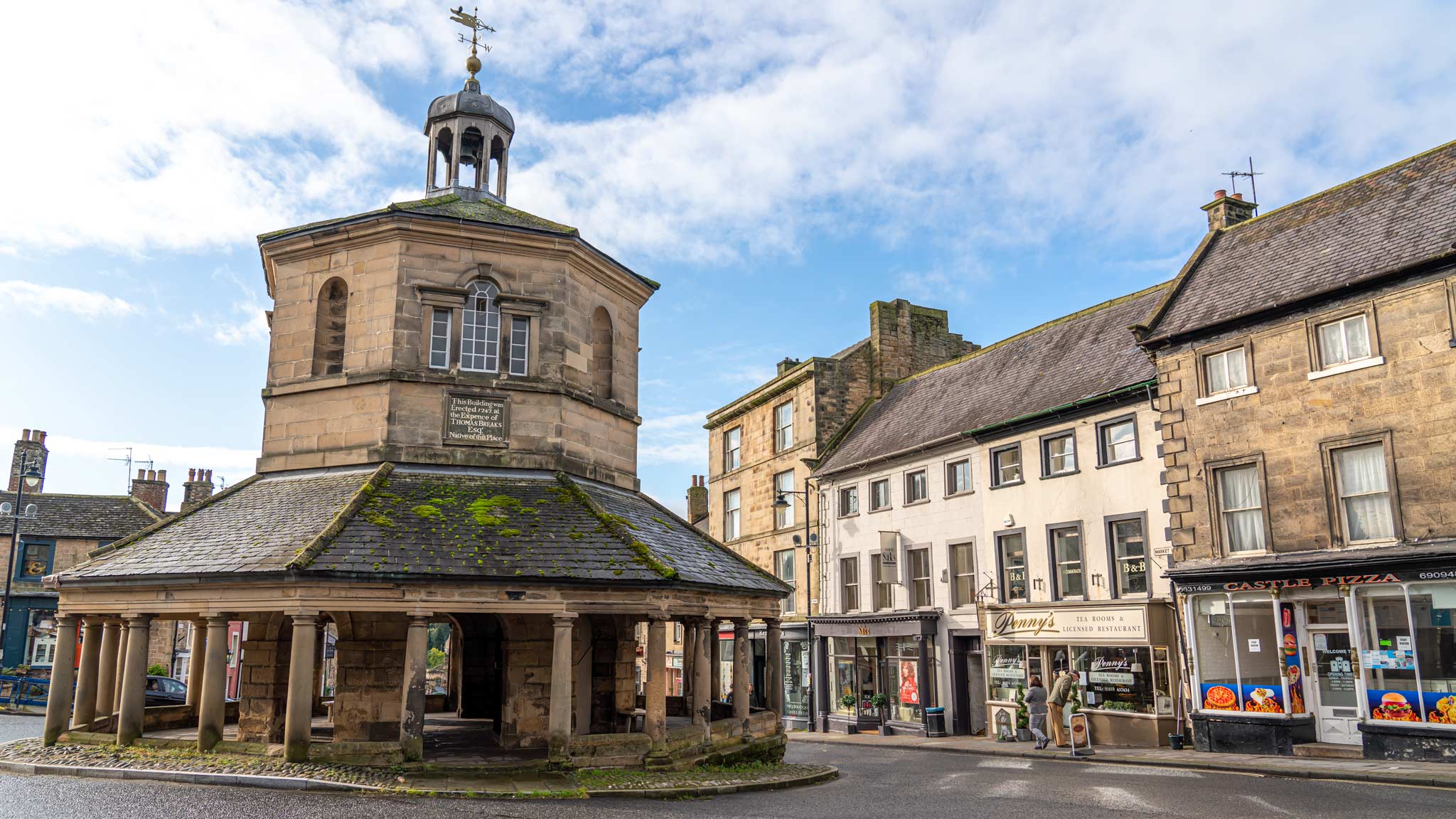
Enjoy the newly opened Auckland Castle and Bishop Auckland
An adorable old market town, Bishop Auckland is named after the Bishop of Durham, who used to own the land, and the town spread out from the recently re-opened to the public castle.
A walk around the small side streets here will take you to some quaint cafes, The Auckland Cupcake Co., a must-visit for those with a sweet tooth, and a couple of small independent shops selling local goods. The Auckland Project, a passionate organisation, is working to make Bishop Auckland a tourism destination again and also have its own creative hub and store called No. 42.
The HQ of The Auckland Project is at the Auckland Tower, well worth visiting for the views from the terrace alone, and inside, you’ll find all the history you might want to know about the Bishops of Durham over the years.
The star of the show is Auckland Castle, which sits in a vast area of green gardens and, as of November 2019, has been fully restored and opened to the public as a museum.
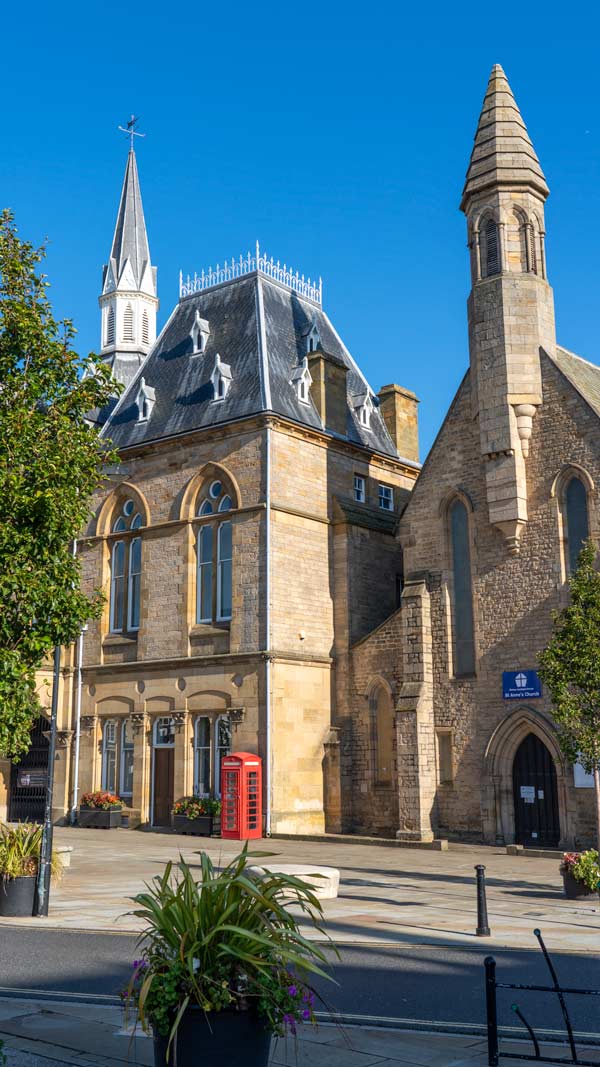
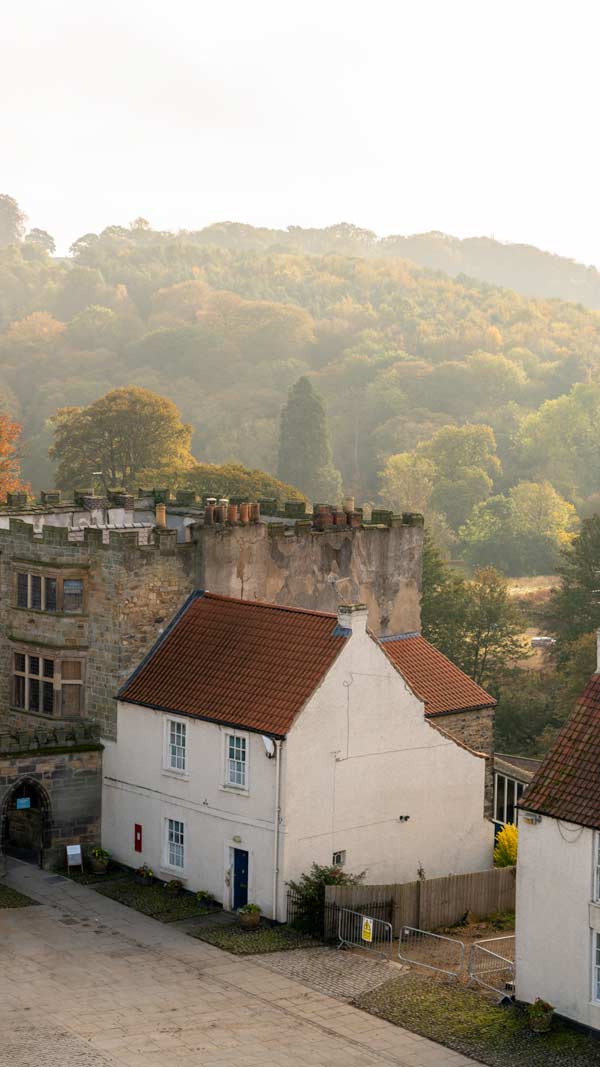
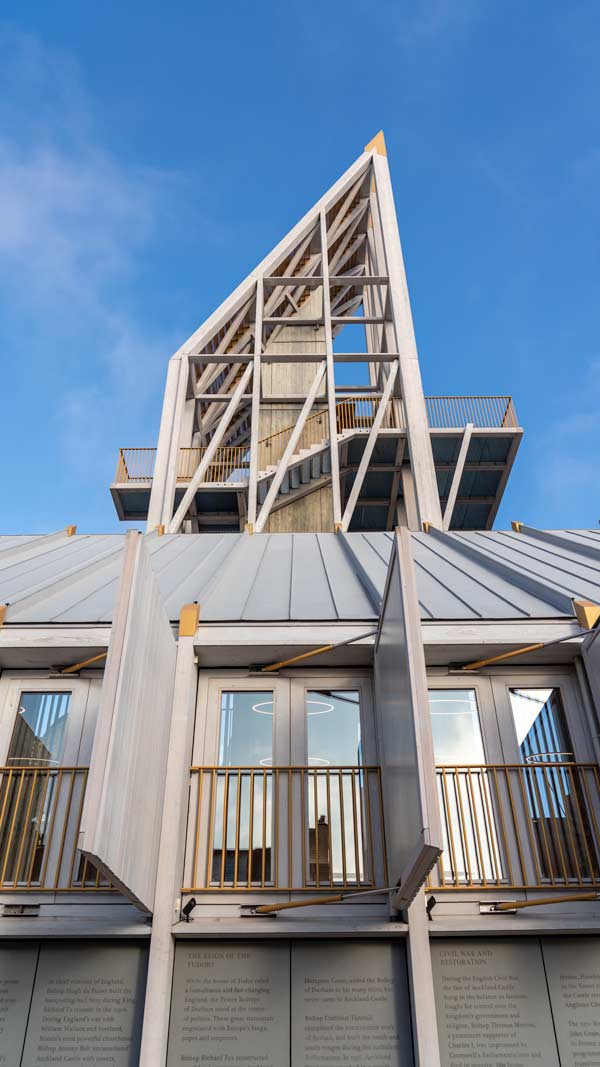
Sadly I was only able to visit the gallery inside on my visit as they were still putting the finishing touches in, but from the sneak peek I did get it seems like it’s going to be as fun and interactive as the other museums, I saw in Durham. With audio in each room, and a ‘lived in’ theme throughout the castle (think banquet tables with half-eaten feasts and wardrobes you can rummage around in) they have done a fantastic job of bringing the castle truly back to life!
Another part of The Auckland Project worth visiting is Bishop Trevor Galley, which is on the main square just down from the tower. The gallery focuses mainly on local artists telling the stories of the mining communities of the region, and with coal being such an important part of Durham’s history, there is quite a large collection of artwork here.
You could easily spend a full day in Bishop Auckland alone between the attractions here, and if you are here on the weekend in August or September, try and tie your visit in with the open-air performance of Kynren, telling tales from England gone by, which did take place against the backdrop of the castle but from 2020 will be set in its own park with new attractions!
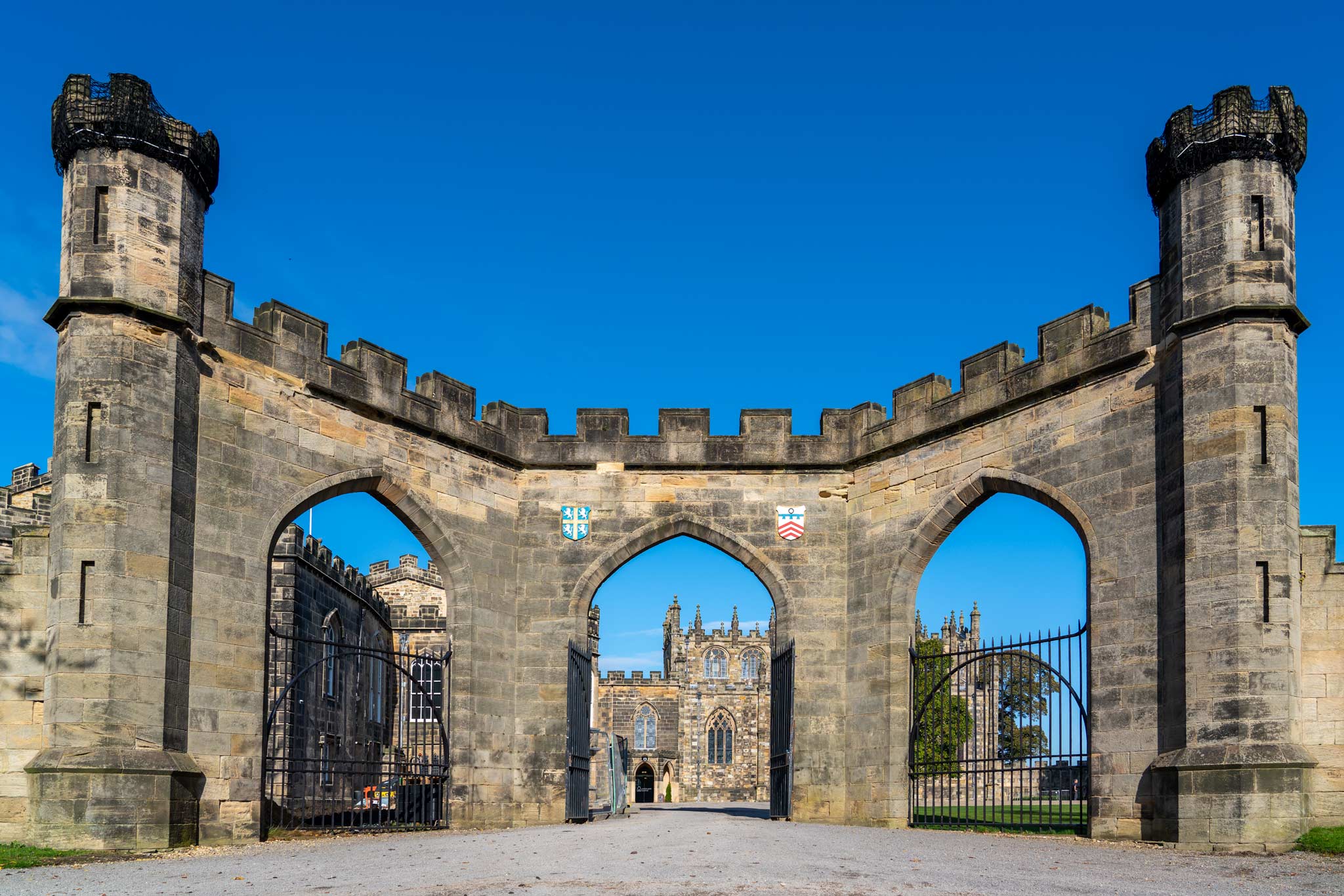
Understand the north-easts coal and rail history at Locomotion
Not far from Bishop Auckland is Locomotion, located in Shildon, which is a short bus ride away.
This free museum is dedicated to rail, and the location is due to the Stockton & Darlington Railway opening their engineering headquarters here in the 1820s.
There is a huge collection of over 70 trains here, dating back over the years, with some even open so you can walk through them. It’s quite impressive (or perhaps depressing) to see how luxurious some of the train carriages were years ago compared to nowadays.
Outside, you can also see the historic buildings related to the local railway heritage and the old tracks. On certain days, you’ll see the old steam rail come to life again for those wanting to take a ride.
Search for sea glass along the Durham Heritage Coast
With time against me, I made a mad dash over to Seaham on the Durham Coast, planning to do a little hike along it. Sadly, the sun was already setting when I arrived, so I just settled in to enjoy a beautiful sunset during my last moments in Durham.
The Durham coast is quite well known for sea glass, which I hadn’t heard of before, but due to the bottle works which used to be a long here, all of these beautiful colours of the glass have been weathered by the waters over the years and are along the beach, with people coming to collect the almost shiny pebbles for their collections!
There were still plenty more things I wanted to explore and experience in Durham, but it turned out four days wasn’t enough time. But in those four days, it genuinely did become one of my top places to travel in England!
Find out more about Durham on the official tourist board website!
Need to know: Durham
A few tips and tricks to make planning your visit to Durham even easier.
How to get to Durham? The nearest airport to Durham is Newcastle Airport, which has plenty of international flights. From here, you can easily take the metro to Newcastle City and then a train to Durham. The total journey should be less than one hour, door to door.
If you are already in the UK, there are regular train connections to Durham on both high-speed and standard routes. The fastest journey time from London is about 2:45, and from Edinburgh, around two hours. As always in the UK, booking your train tickets as far in advance will save you money; I personally use www.thetrainline.com.
Where to stay in Durham? There are countless options of where to stay in Durham and on my visit I checked into the super cosy rooms at The Kings Lodge Inn. Fair priced, walking distance to the city centre and train station, and with breakfast included, the rooms were modern but with traditional touches, and the team were very welcoming. It’s also a cracking pub, but luckily I didn’t find it too busy thus in the rooms there wasn’t any noise.
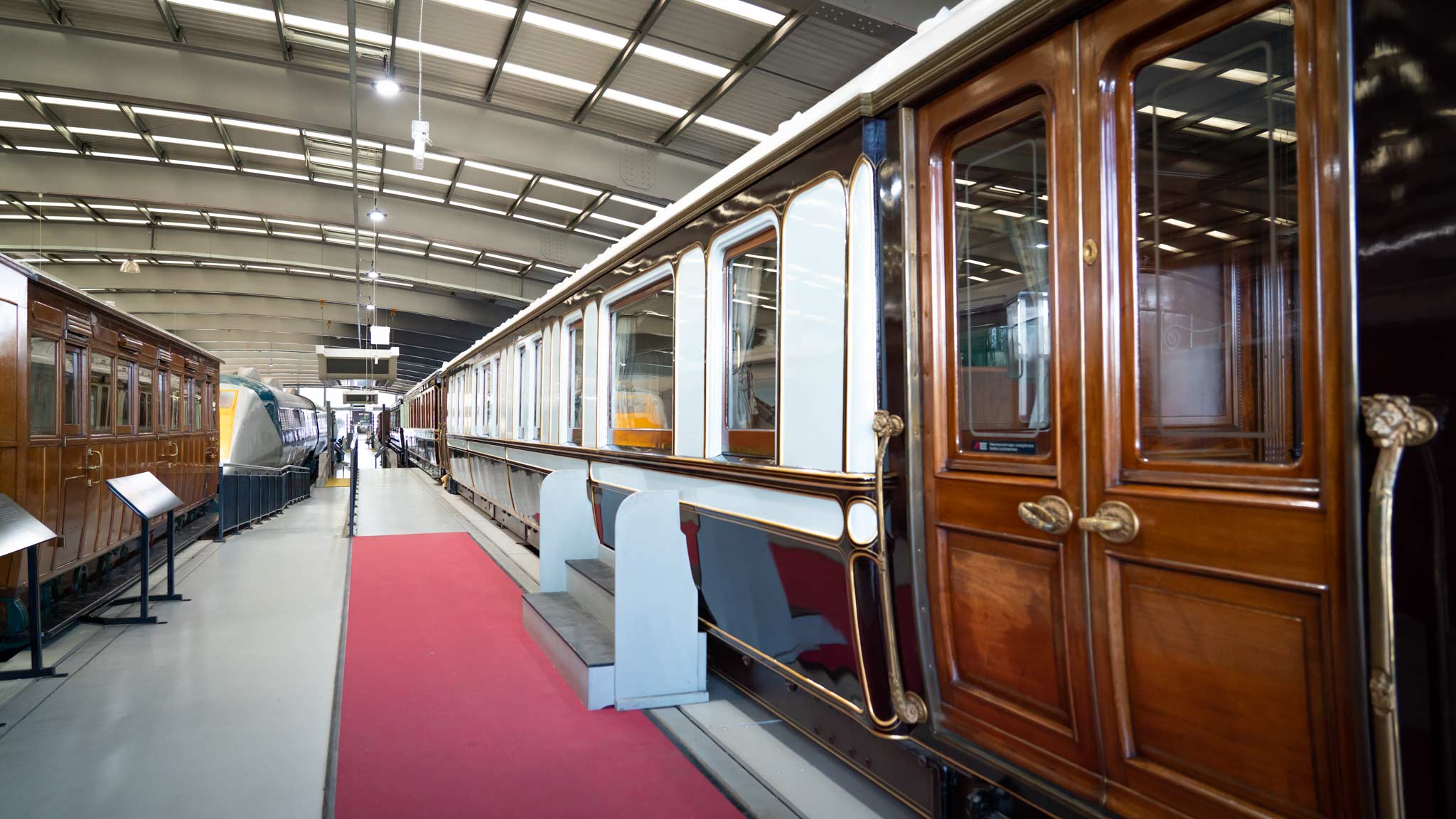
For a unique place to stay, consider booking one of the suites in Durham Castle, which are available when the University is on a break. You can check availability and pricing here.
Getting around Durham? The city itself is quite compact, and thus, you can easily discover it on foot. If you plan to head to, say, the Botanic Gardens, which are just outside the city centre, there are regular buses. To explore beyond the city centre, I’m happy to say everywhere I visited can be reached by public transport, sometimes direct and sometimes with a change or a short walk. The local buses offer an explorer day pass, which will save you money if heading to a few attractions in one day – check the Go North East website for timetables.
Events not to miss in Durham? Durham has a packed annual events calendar, and there are two events you should absolutely visit if you are around at the time. Lumiere in November sees the city come to life with the UK’s largest light festival, as the city is projected upon with multiple light installations. Kyren is another must-see, which is an open-air performance set against the backdrop of Auckland Castle during the Saturdays of August and September and tells the story of England.
Accessibility in Durham? The This is Durham website has an accessibility team, which can be contacted for more information here, and their website lists accessibility information for all the attractions listed on the site. For specific main attractions, there is information online for the likes of Durham Cathedral, Durham Castle (as part of the University) and Beamish, where they also have modified transport.
Find out more: For help planning your trip and discovering even more awesome places in Durham to visit and their packed-out events calendar, check out the official website at www.thisisdurham.com/amazing or follow @thisisDurham on social media.




Excellent articles of places my wife and I visited- especially the scene of Cathedral and palace Green and some of the shots of interior of Cathedral.
There is a very special reason for asking- but are any of these available to purchase for domestic/personal use only.
Thank you David. Drop me an email to [email protected] and let me know which images you want and if just as images or prints and I’ll see what I can do :)
Well, I want to say that your article is amazing and fabulous for everyone. I really love your article about Reasons to visit Durham City and County, the quintessential English getaway.
Thanks!